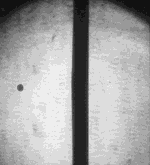This is an old revision of this page, as edited by Deacon Vorbis (talk | contribs) at 15:12, 4 October 2018 (Undid revision 862459072 by 2601:2C6:80:C23:2D90:9E73:F788:CA34 (talk) already linked). The present address (URL) is a permanent link to this revision, which may differ significantly from the current revision.
Revision as of 15:12, 4 October 2018 by Deacon Vorbis (talk | contribs) (Undid revision 862459072 by 2601:2C6:80:C23:2D90:9E73:F788:CA34 (talk) already linked)(diff) ← Previous revision | Latest revision (diff) | Newer revision → (diff)| This article needs additional citations for verification. Please help improve this article by adding citations to reliable sources. Unsourced material may be challenged and removed. Find sources: "Microsecond" – news · newspapers · books · scholar · JSTOR (July 2009) (Learn how and when to remove this message) |

A microsecond is an SI unit of time equal to one millionth (0.000001 or 10 or 1⁄1,000,000) of a second. Its symbol is μs.
A microsecond is equal to 1000 nanoseconds or 1⁄1,000 of a millisecond. Because the next SI prefix is 1000 times larger, measurements of 10 and 10 seconds are typically expressed as tens or hundreds of microseconds.
Examples
- 1 microsecond (1 μs) – cycle time for frequency 1 × 10 hertz (1 MHz), the inverse unit. This corresponds to radio wavelength 300 m (AM medium wave band), as can be calculated by multiplying 1 µs by the speed of light (approximately 3.00 × 10 m/s) to determine the distance travelled.
- 1 microsecond – the length of time of a high-speed, commercial strobe light flash (see air-gap flash).
- 1.8 microseconds – the amount of time subtracted from the Earth’s day as a result of the 2011 Japanese earthquake.
- 2 microseconds – the lifetime of a muonium particle
- 2.68 microseconds – the amount of time subtracted from the Earth’s day as a result of the 2004 Indian Ocean earthquake.
- 3.33564095 microseconds – the time taken by light to travel one kilometer in a vacuum
- 5.4 microseconds – the time taken by light to travel one mile in a vacuum (or radio waves point-to-point in a near vacuum)
- 8.01 microseconds – the time taken by light to travel one mile in typical single mode fiber optic cable
- 10 microseconds (μs) – cycle time for frequency 100 kHz, radio wavelength 3 km
- 18 microseconds – net amount per year that the length of the day lengthens, largely due to tidal acceleration.
- 20.8 microseconds – sampling interval for digital audio with 48,000 samples/s
- 22.7 microseconds – sampling interval for CD audio (44,100 samples/s)
- 38 microseconds – discrepancy in GPS satellite time per day (compensated by clock speed) due to relativity
- 50 microseconds – cycle time for highest human-audible tone (20 kHz)
- 50 microseconds to read – the access latency for a modern solid state drive which holds non-volatile computer data
- 100 microseconds (0.1 ms) – cycle time for frequency 10 kHz
- 125 microseconds – sampling interval for telephone audio (8000 samples/s)
- 164 microseconds – half-life of polonium-214
- 240 microseconds – half-life of copernicium-277
- 250 microseconds – cycle time for highest tone in telephone audio (4 kHz)
- 277.8 microseconds – a fourth (a 60th of a 60th of a second), used in astronomical calculations by al-Biruni and Roger Bacon in 1000 and 1267 AD, respectively.
- 489.67 microseconds – time for light at a 1550 nm frequency to travel 100 km in a singlemode fiber optic cable (where speed of light is approximately 200 million meters per second due to its index of refraction).
- 976.5625 microseconds – a four thousand ninety-sixth note at 60 BPM
- The average human eye blink takes 350,000 microseconds (just over 1/3 of one second).
- The average human finger snap takes 150,000 microseconds (just over 1/7 of one second).
- A camera flash illuminates for 1000 microseconds.
- Standard camera shutter speed opens the shutter for 4000 microseconds or 4 milliseconds.
See also
References
- Buis, Alan (January 10, 2005). "NASA Details Earthquake Effects on the Earth". NASA. Retrieved June 29, 2011.
- MacDonald, Fiona. "Earth's Days Are Getting 2 Milliseconds Longer Every 100 Years". ScienceAlert. Retrieved 2017-03-08.
- Richard Pogge. "GPS and Relativity". Retrieved 2011-10-01.
- Intel Solid State Drive Product Specification
- al-Biruni (1879). The chronology of ancient nations: an English version of the Arabic text of the Athâr-ul-Bâkiya of Albîrûnî, or "Vestiges of the Past". Translated by Sachau C Edward. W.H. Allen. pp. 147–149. OCLC 9986841.
-
R Bacon (2000) . The Opus Majus of Roger Bacon. translator: BR Belle. University of Pennsylvania Press. table facing page 231. ISBN 978-1-85506-856-8.
{{cite book}}: Unknown parameter|nopp=ignored (|no-pp=suggested) (help)
External links
| Orders of magnitude of time | |
|---|---|
| by powers of ten | |
| Negative powers | |
| Positive powers | |